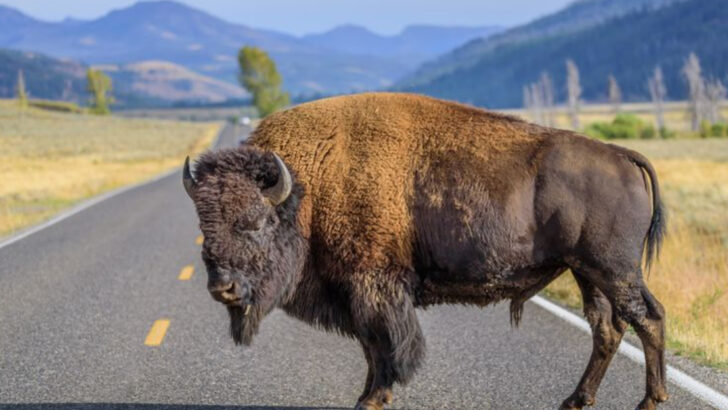Yellowstone National Park isn’t just America’s first national park – it’s a wildlife kingdom.
With more mammal species than any other U.S. region, this natural wonderland is home to creatures that stir awe and wonder. From the mighty bison that roam the plains to the elusive wolves that prowl the forests, Yellowstone is a living, breathing testament to nature’s raw beauty.
This park is a world where nature’s drama unfolds in every corner – every step you take, every turn you make, you’re bound to spot something wild and unexpected.
Ready to explore some of the most fascinating mammals that call Yellowstone home? Prepare to be captivated by the creatures that make this park a true sanctuary for wildlife.
American Bison

The American Bison, often regarded as the symbol of the Great Plains, roams freely across Yellowstone’s expansive landscapes. These majestic creatures, once on the brink of extinction, have made a remarkable comeback.
Standing tall with their massive heads and humped shoulders, bison are a testament to the resilience of nature. As the morning sun casts a golden hue across the plains, these gentle giants graze peacefully, embodying the spirit of the wild west.
Observing a bison herd in Yellowstone is not just a visual treat, but a step back into history, witnessing a living legacy.
Gray Wolf
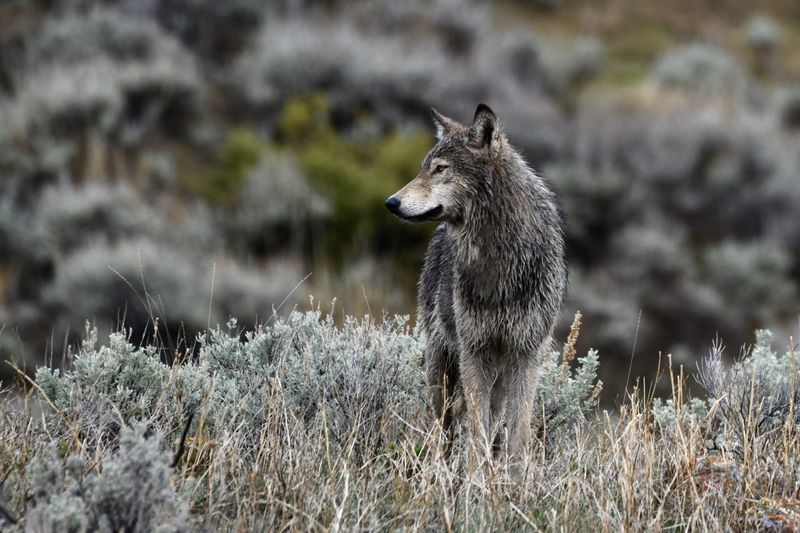
Reintroduced to Yellowstone in the mid-1990s, gray wolves have revitalized the park’s ecosystem. These intelligent predators play a crucial role in maintaining the balance of nature, regulating prey populations and fostering biodiversity.
With their haunting howls echoing through the forest, wolves add a mystical aura to Yellowstone’s wilderness. Snowflakes whirl around as a pack maneuvers through the frosty woods, their presence an emblem of the untamed.
Watching wolves in their natural habitat is a privilege, offering insights into the intricate dance of predator and prey, survival and harmony.
Grizzly Bear
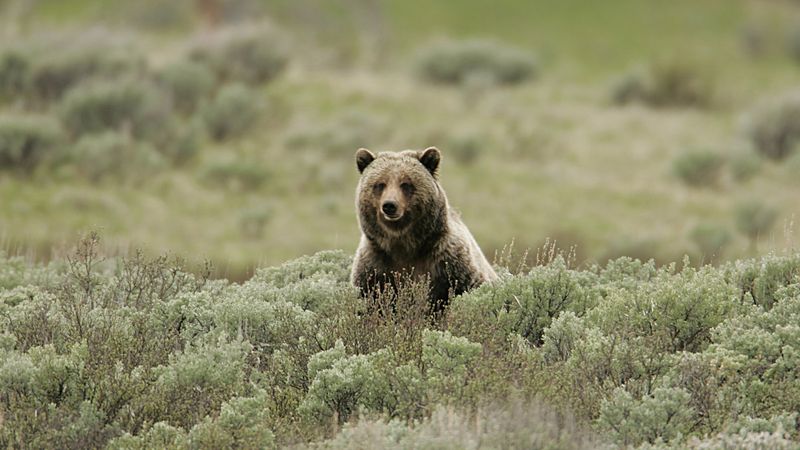
Grizzly bears, with their sheer strength and commanding presence, rule the forests and valleys of Yellowstone. These formidable creatures, capable of reaching impressive sizes, are often seen foraging near rivers, searching for fish or edible plants.
In the dappled sunlight, a grizzly’s fur glistens as it ambles along the riverbank, an embodiment of nature’s raw power. Despite their size, these bears are nimble and resourceful, illustrating the delicate balance of survival.
Encountering a grizzly in Yellowstone is an unforgettable experience, a testament to the park’s thriving wildness.
Elk
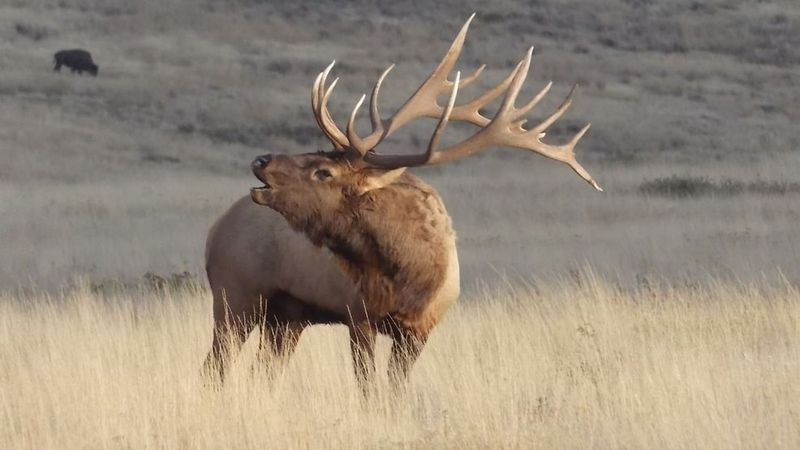
Elk, with their regal antlers and graceful stature, are a common sight in Yellowstone. During the rutting season, the haunting bugles of male elk echo through the park as they compete for attention.
In the early morning mist, an elk stands poised, its antlers silhouetted against the rising sun, creating a scene of breathtaking beauty. These herbivores play a crucial role in the park’s ecosystem, influencing vegetation patterns and feeding predators.
Observing elk in their natural environment offers a glimpse into the intricate web of life that thrives in Yellowstone.
Yellowstone Cougar
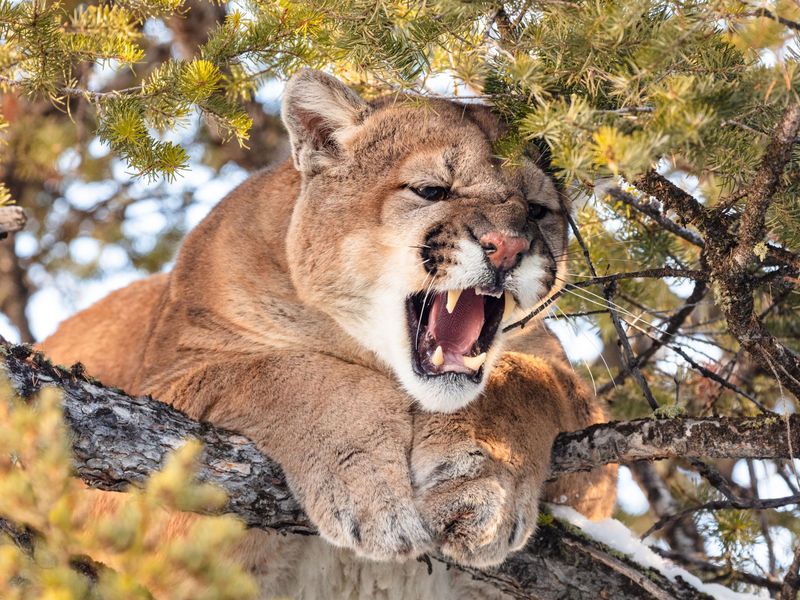
The elusive Yellowstone Cougar, or mountain lion, prowls the rugged terrains of the park, a master of stealth and agility. Rarely seen, these solitary hunters blend seamlessly with their surroundings, making them a true icon of the wild.
Perched on a rocky outcrop, a cougar’s keen eyes scan the valley below, ready to spring into action at a moment’s notice. Their adaptability and cunning make them formidable predators in the complex Yellowstone ecosystem.
Spotting a cougar is a rare thrill, a fleeting connection with one of nature’s most enigmatic creatures.
Pronghorn Antelope
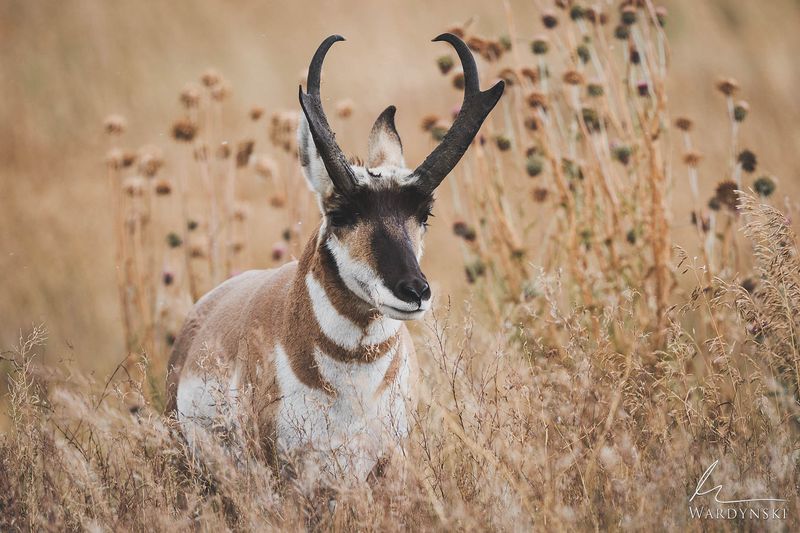
Pronghorn antelopes, known for their remarkable speed, dash across the grasslands of Yellowstone with an almost ethereal grace. As North America’s fastest land animal, they can reach speeds up to 55 mph, a breathtaking spectacle to witness.
With their striking markings and alert demeanor, pronghorns are a symbol of the untamed prairie. Observing these fleet-footed creatures is a reminder of the agility and endurance required for survival in the wild.
Their presence in Yellowstone contributes to the park’s dynamic tapestry of life, a testament to nature’s incredible diversity.
Moose
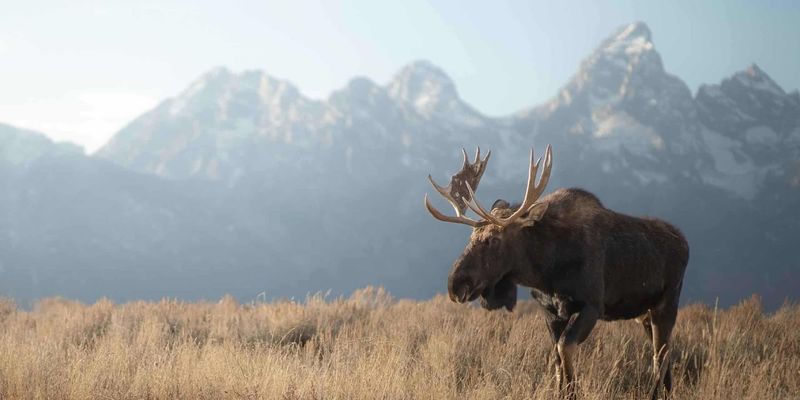
Moose, with their long legs and distinctive antlers, roam the northern reaches of Yellowstone. These solitary giants are often found near water, wading through ponds in search of aquatic plants.
Amidst the lush greenery, a moose stands partially submerged, its antlers rising like a crown above the surface. Their presence exudes a calming influence, a serene counterpoint to the park’s bustling wildlife.
Observing a moose in its natural habitat offers a tranquil glimpse into the quiet corners of Yellowstone, where nature unfolds in its own time.
Red Fox
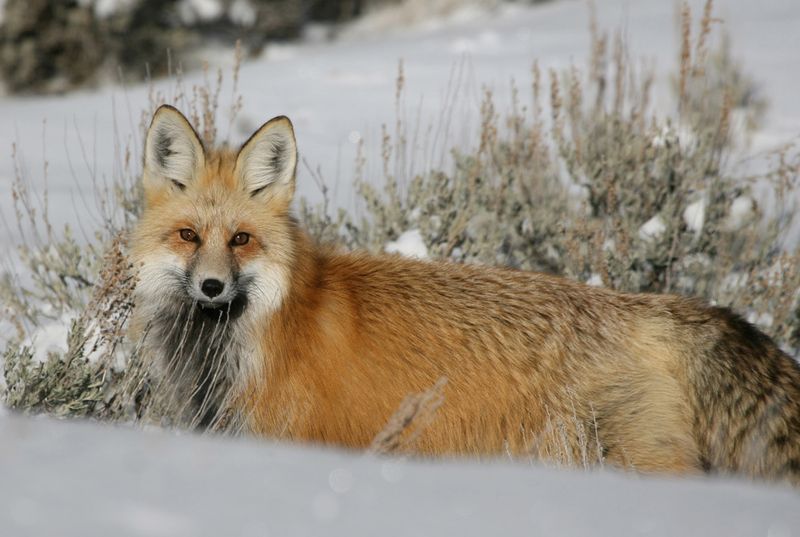
The red fox, with its russet coat and bushy tail, adds a touch of color to Yellowstone’s snowy landscapes. Agile and curious, foxes are often seen trotting through the snow, their footprints marking the path of their explorations.
In the crisp winter air, a fox’s fur glows against the white backdrop, a vibrant flash amidst the monochrome. These clever hunters adapt well to changing conditions, exemplifying resilience and resourcefulness.
Watching a red fox in Yellowstone is a delightful encounter, a reminder of the lively and vibrant wildlife that thrives even in the harshest conditions.
Coyote
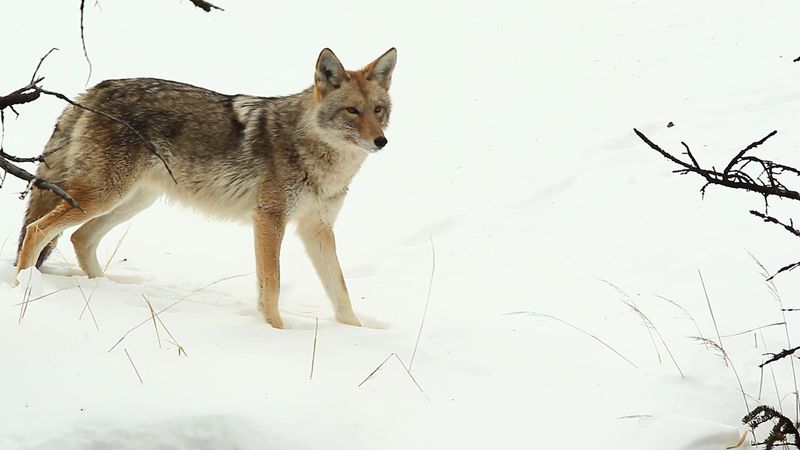
Coyotes, with their distinctive howls, are the versatile survivors of Yellowstone. These adaptable creatures thrive in diverse habitats, from forests to grasslands, showcasing remarkable cunning and resourcefulness.
As dawn breaks, a lone coyote stands atop a hill, its silhouette outlined against the colorful morning sky. Their howls create a symphony of the wild, echoing across the valleys and mountains.
Observing coyotes offers a glimpse into the adaptable nature of wildlife, a testament to the enduring spirit of life in Yellowstone’s vast wilderness.
Bighorn Sheep
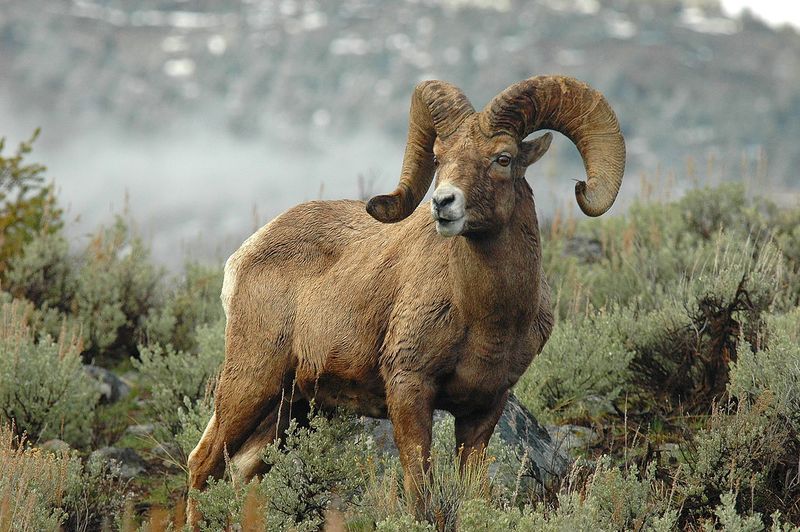
Bighorn sheep, renowned for their impressive spiral horns, navigate the rocky terrains of Yellowstone with grace and agility. These strong climbers are often spotted on steep cliffs, where their sure-footedness is nothing short of astonishing.
In the rugged landscape, a group of bighorn sheep stand poised, their horns a testament to strength and survival. Watching these animals deftly maneuver their environment is a captivating experience, showcasing nature’s adaptability.
The presence of bighorn sheep in Yellowstone highlights the park’s diverse habitats, where life thrives even in the most challenging conditions.

